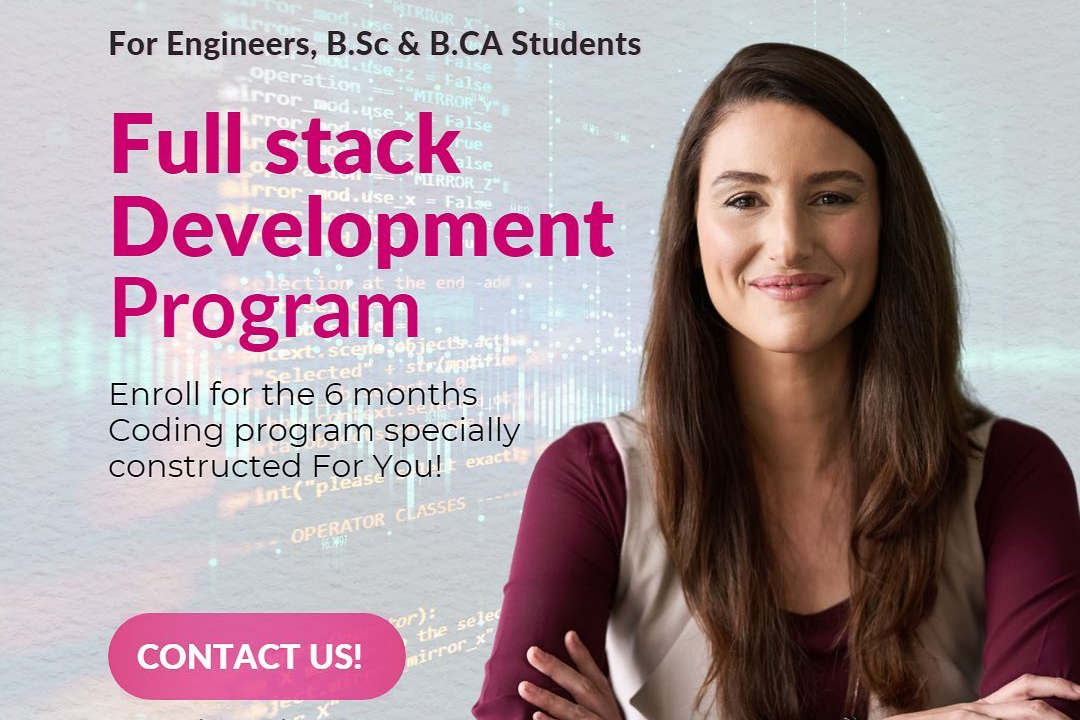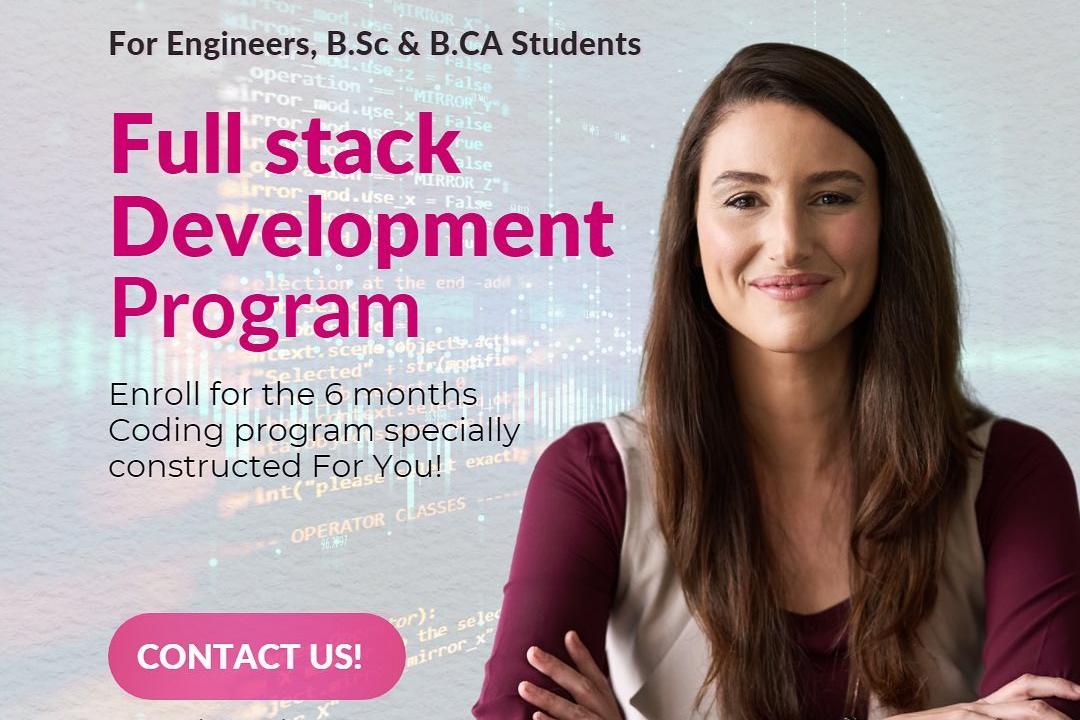Laravel Middleware Interview Questions
Essential Laravel Middleware Interview Questions You Need to Know
Laravel Middleware Interview Questions
Laravel middleware plays a crucial role in handling HTTP requests entering an application, serving as a bridge between a request and the application's response. Understanding middleware is essential for interviews, as it demonstrates a candidate's grasp of application security, request filtering, and performance optimization. Middleware can be used for various purposes such as authentication, logging, CORS management, and modifying requests or responses. By effectively utilizing middleware, developers can ensure that their applications enforce key policies and maintain a clean, organized codebase, leading to more maintainable and scalable applications. Interviewers often explore candidates' knowledge of creating custom middleware and their ability to apply it in real-world scenarios, making it a vital topic of discussion.
To Download Our Brochure: https://www.justacademy.co/download-brochure-for-free
Message us for more information: +91 9987184296
Laravel Middleware Interview Questions
1 - What is middleware in Laravel?
Middleware in Laravel is a filtering mechanism that processes HTTP requests coming into the application and can perform tasks such as authentication, logging, or modifying requests and responses before they reach the intended destination.
2) How do you create a middleware in Laravel?
To create middleware in Laravel, you can use the artisan command `php artisan make:middleware MiddlewareName`, which generates a new middleware class in the `app/Http/Middleware` directory.
3) How can you register middleware in Laravel?
You can register middleware in the `app/Http/Kernel.php` file, either in the `$middleware` array for global middleware or the `$routeMiddleware` array for route specific middleware.
4) What is route middleware?
Route middleware is middleware that is assigned to specific routes or route groups, allowing you to apply different middleware functionalities to different parts of your application.
5) How do you apply middleware to a route?
You can apply middleware to a route using the ` >middleware('middlewareName')` method in the route definition or by defining it in the route group in the routes file.
6) What is global middleware?
Global middleware is executed on every HTTP request entering the application, making it suitable for tasks like session management, CORS handling, and logging, as it's applied across all routes.
7) Can you pass parameters to middleware?
Yes, you can pass parameters to middleware by defining them in the middleware's handle method and including the parameters in the route definition, allowing dynamic behavior based on the given values.
8) What are some common examples of middleware in Laravel?
Common middleware examples in Laravel include authentication (`auth`), logging (`log`), CORS handling (`cors`), and rate limiting (`throttle`).
9) How do you create custom middleware for authentication?
To create custom authentication middleware, you would implement the `handle` method in your middleware class to check for user authentication status and redirect unauthorized users as needed.
10) What is the purpose of the `$next` variable in middleware?
The `$next` variable represents the next middleware in the pipeline or the final destination of the request; you must call it to pass the request to the next middleware or return a response.
11 - How can you terminate middleware?
You can terminate middleware by implementing the `terminate` method in your middleware class, which allows you to perform actions after the response has been sent, like logging and cleanup tasks.
12) What is the difference between middleware and controllers?
Middleware is designed for handling HTTP requests and responses and is typically used for cross cutting concerns like authentication and logging, while controllers handle the application logic and return responses based on user requests.
13) How can middleware handle exceptions in Laravel?
Middleware can handle exceptions by catching them within the `handle` method and returning a custom response, providing more granular control over error handling in specific circumstances.
14) What is the `$routeMiddleware` array used for?
The `$routeMiddleware` array in `Kernel.php` is where you define middleware that can be applied on a per route basis, allowing for flexible control over which middleware to apply to which routes.
15) How can you check if a user is an admin using middleware?
You can create a middleware that checks the user's role by querying the user model, and then use this middleware to restrict access to specific routes based on the user's admin status, redirecting unauthorized access attempts.
Additional Laravel Middleware Interview Questions
16) What are the advantages of using middleware in Laravel?
Middleware provides a clean and reusable way to handle common tasks that apply to multiple routes, improving code organization and reducing duplication. It also allows for easier management and modification of cross cutting concerns.
17) What is the purpose of the `Handle` method in middleware?
The `handle` method is where you define the logic for the middleware. It takes the incoming request, processes it (like checking authentication), and either passes it to the next piece of middleware or sends a response back immediately.
18) Can middleware be used to modify the response after it has been processed?
Yes, middleware can modify the response after it has been processed by the application. This can be done by manipulating the response object before returning it.
19) What is the `terminate` method used for?
The `terminate` method is used to perform actions after the response has been sent to the user. This can include logging, cleanup tasks, or any other post response operations necessary for your application.
20) How can you create a middleware to log user activities?
You would create a custom middleware that logs user activities by implementing logic within the `handle` method, capturing requested URLs, user IDs, timestamps, and storing this data in a log file or database.
21 - Can middleware be queued in Laravel?
Yes, middleware can be queued, allowing you to create a chain of middleware that can be executed one after another in a defined order, ensuring that each middleware works seamlessly with the next.
22) How do you restrict access to routes using middleware?
Access to routes can be restricted by creating middleware that checks user roles or permissions. If the user does not meet the requirements, you can redirect them or return an error response.
23) What is the difference between `before` and `after` middleware?
`Before` middleware runs before the request processing begins, allowing you to perform checks or modifications on the incoming request, while `after` middleware runs after the request has been processed, making it suitable for response modification.
24) How do you handle CSRF (Cross Site Request Forgery) protection in Laravel?
CSRF protection is handled by Laravel's built in middleware `VerifyCsrfToken`. This middleware checks if the CSRF token in the request matches the token stored in the session, preventing malicious attacks.
25) What happens if middleware returns a response?
If middleware returns a response, Laravel will not continue to process the request through the other middleware or controllers. The returned response will be sent directly to the user, effectively stopping further execution.
26) How can middleware be used to implement role based access control?
You can implement role based access control by creating middleware that checks user roles against required roles for certain routes. This middleware can then redirect or block unauthorized access accordingly.
27) Can multiple middleware be assigned to the same route?
Yes, multiple middleware can be assigned to a single route by passing an array of middleware names when defining the route, allowing for layered functionality.
28) What is the significance of using middleware groups in Laravel?
Middleware groups allow you to bundle multiple middleware together under a single key, making it simple to apply a set of middleware to a collection of routes with minimal configuration.
29) How do you handle cross origin requests with middleware in Laravel?
You can handle cross origin requests by creating custom middleware or using Laravel's built in CORS support, which allows you to set appropriate headers for handling requests from different origins.
30) How do you test middleware in Laravel?
Middleware can be tested by simulating HTTP requests using Laravel's testing features, allowing you to assert that the middleware behaves as expected in terms of returning responses and modifying requests or responses as intended.
Course Overview
The “Laravel Middleware Interview Questions” course is designed to equip learners with a comprehensive understanding of middleware within the Laravel framework, essential for managing HTTP requests and enhancing application security. Through a series of in-depth discussions and practical scenarios, participants will explore various aspects of middleware implementation, including creation, testing, and real-world use cases such as logging, authentication, and role-based access control. By engaging with a curated list of interview questions, this course prepares individuals for technical interviews, ensuring they can confidently articulate their knowledge and practical experience with Laravel middleware. Ideal for developers seeking to deepen their skills and enhance their job prospects, this course combines theoretical insights with hands-on exercises to foster a thorough grasp of middleware and its applications.
Course Description
The “Laravel Middleware Interview Questions” course offers an in-depth exploration of middleware in the Laravel framework, focusing on its crucial role in managing HTTP requests and enhancing application performance and security. Participants will learn to create, register, and apply middleware while examining real-world use cases such as authentication, logging, and role-based access control. Through a comprehensive set of interview questions and practical exercises, this course prepares learners for technical interviews by reinforcing their understanding of middleware concepts and best practices. Ideal for developers aiming to bolster their skills and job readiness, this course blends theoretical knowledge with hands-on application to ensure mastery of Laravel middleware.
Key Features
1 - Comprehensive Tool Coverage: Provides hands-on training with a range of industry-standard testing tools, including Selenium, JIRA, LoadRunner, and TestRail.
2) Practical Exercises: Features real-world exercises and case studies to apply tools in various testing scenarios.
3) Interactive Learning: Includes interactive sessions with industry experts for personalized feedback and guidance.
4) Detailed Tutorials: Offers extensive tutorials and documentation on tool functionalities and best practices.
5) Advanced Techniques: Covers both fundamental and advanced techniques for using testing tools effectively.
6) Data Visualization: Integrates tools for visualizing test metrics and results, enhancing data interpretation and decision-making.
7) Tool Integration: Teaches how to integrate testing tools into the software development lifecycle for streamlined workflows.
8) Project-Based Learning: Focuses on project-based learning to build practical skills and create a portfolio of completed tasks.
9) Career Support: Provides resources and support for applying learned skills to real-world job scenarios, including resume building and interview preparation.
10) Up-to-Date Content: Ensures that course materials reflect the latest industry standards and tool updates.
Benefits of taking our course
Functional Tools
1 - Laravel Framework
The primary tool used in this course is the Laravel framework itself, which offers a powerful and elegant toolkit for web application development. Laravel’s built in middleware functionalities allow developers to filter HTTP requests entering their application. Students will learn how to leverage Laravel’s middleware features to manage tasks such as authentication, sessions, and logging effectively, enhancing their understanding of the framework's architecture and promoting best practices in web development.
2) PHP
As Laravel is built on PHP, a strong foundational understanding of this programming language is crucial for students. The course will complement middleware learning with PHP fundamentals, teaching students how PHP handles HTTP requests and responses. By integrating PHP with Laravel, learners will acquire skills to construct middleware that manipulates request and response data, deepening their grasp of server side programming and application logic.
3) Composer
Composer is a dependency management tool for PHP that plays a significant role in the Laravel ecosystem. During the course, students will utilize Composer to manage package dependencies effectively. This tool simplifies the installation of Laravel and its components, as well as any additional libraries needed for middleware. Understanding how to work with Composer will enable students to maintain and update their projects seamlessly, fostering good version control practices.
4) Postman
Postman is an API testing tool that will be instrumental for students throughout the course. Learners will use Postman to send requests to their Laravel application and observe how middleware interacts with those requests. This hands on experience aids in understanding middleware functionality, as it allows students to test various middleware scenarios, debug their applications, and examine the results in real time, improving their debugging skills significantly.
5) Laravel Tinker
Laravel Tinker is a powerful REPL (Read Eval Print Loop) tool integrated within the Laravel framework, providing an interactive command line environment. Students will use Tinker to experiment with Laravel’s Eloquent ORM, test middleware functionality, and manipulate application data directly from the command line. This tool enhances the learning experience by allowing students to quickly run code snippets and evaluate the behavior of their middleware without needing to set up a full web interface.
6) Version Control System (Git)
A solid understanding of version control systems, especially Git, is essential for managing code effectively in team environments. Throughout the course, students will learn to use Git for tracking changes in their projects, collaborating with others, and maintaining code integrity. This tool will foster good software development practices, enabling students to understand how to manage branches, resolve conflicts, and implement best practices such as commit messages and pull requests.
7) Database Management Systems (MySQL/PostgreSQL)
A vital component of developing robust applications is understanding how to interact with databases. In this course, students will work with popular database management systems like MySQL or PostgreSQL. They will learn to set up databases, create tables, execute queries, and utilize Laravel's Eloquent ORM to manage data interactions seamlessly. By integrating middleware with database operations, students will gain insights into data validation and manipulation processes.
8) Authentication and Authorization
Middleware plays a crucial role in implementing authentication and authorization in web applications. This course will cover Laravel's built in authentication systems, showing students how to create secure authentication mechanisms. Students will learn to implement middleware for roles and permissions, ensuring that users have the appropriate access levels throughout the application. This understanding is critical for building secure applications that protect sensitive data.
9) RESTful APIs
As web applications increasingly rely on APIs for communication between front and back ends, this course will focus on building RESTful APIs using Laravel middleware. Students will learn the principles of REST architecture and how to implement middleware that handles API requests efficiently, including response transformations, rate limiting, and error handling. This knowledge prepares students to create modern, scalable applications that leverage API driven development.
10) Unit Testing
Testing is a fundamental aspect of software development, and this course will introduce students to unit testing within Laravel. They will learn to write tests for their middleware components, ensuring that they function correctly and meet specified requirements. Understanding how to implement testing frameworks fosters a culture of quality assurance, enabling students to deliver more reliable and maintainable applications.
11 - Performance Optimization
Middleware can impact the performance of web applications significantly. This course will cover strategies for optimizing middleware performance, including caching techniques, request/response lifecycle management, and efficient database queries. Students will learn how to monitor application performance and apply best practices to enhance the responsiveness and scalability of their projects.
12) Error Handling and Logging
Effective error handling and logging are essential for maintaining application health. In this course, students will explore Laravel's built in error handling capabilities and learn how to implement middleware for capturing and logging errors gracefully. This knowledge will empower students to create applications that provide meaningful feedback to users while facilitating easier debugging and maintenance.
13) Deployment and Environment Management
Understanding application deployment and environment management is crucial for any developer. The course will cover best practices for deploying Laravel applications, including the use of environment variables and configuration management. Students will see how middleware configuration can differ between development and production settings, ensuring their applications run optimally in any environment.
14) API Rate Limiting and Security
To protect applications from abuse and ensure fair usage, rate limiting is critical. This course will guide students through implementing middleware that monitors and restricts the number of requests an API can handle over a given time. Additionally, students will explore security best practices such as input validation, CSRF protection, and XSS prevention, preparing them to create secure applications.
15) Microservices Architecture
As software development shifts towards microservices architectures, understanding how middleware fits into this model is essential. This course will introduce concepts related to microservices, where middleware can be leveraged for service communication, orchestration, and data aggregation. Students will learn how to design applications that utilize middleware to manage interactions between independent services effectively.
By incorporating these additional points into the course curriculum, students will receive a comprehensive education that equips them with the necessary skills to thrive in the ever evolving landscape of web development.
Browse our course links : https://www.justacademy.co/all-courses
To Join our FREE DEMO Session: Click Here
This information is sourced from JustAcademy
Contact Info:
Roshan Chaturvedi
Message us on Whatsapp: +91 9987184296
Email id: info@justacademy.co
React Native Interview Question For 3 Year Experience












